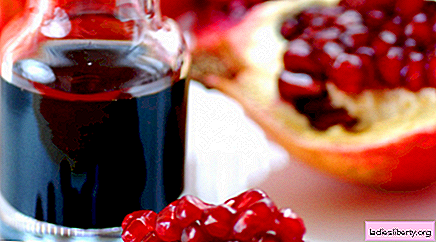
Autumn is the time for various homemade preparations. And for our case - almost the only one.
Indeed, most housewives probably do not have either oak barrels or special "cold" cellars, and the need for salted meat is not so high.
You can store it in the freezer, or just buy the right amount.
But to prepare a delicious homemade corned beef, and with a 100% guarantee of the absence of complex and harmful preservatives - it is necessary and an honor.
General principles of salting meat at home
• The best choice of meat for homemade salting is pork ham. The pulp is quite oily, it is salted well and quickly, and it perfectly perceives seasonings.
• The usual chicken breast can also be salted, but such popular chicken legs are already a more complex product, however, we will try to salt them!
• The main set of products and necessary utensils fits in a couple of lines: actually meat, salt, lavrushka, sugar, coriander, pepper (different); from utensils - voluminous enameled, wooden, glass or porcelain containers of 30 or more liters, or 10-liter bottles.
• Two types of salting - dry and brine, differ dramatically, but there is not much difference in the products used.
• Corned beef is a canned food and table salt acts as a preservative in them. This must be clearly understood, since an attempt to salt the meat at home, immediately receiving a light-salted product, can end in failure. Food poisoning is extremely difficult, it is not worth risking the health of loved ones.
How to salt meat at home - a simple corned beef, "In a rustic way"
Ingredients:
• pork pulp (back) - 2 kg .;
• 2 tablespoons, with a hill, refined sugar;
• salt, not iodinated, large - 8 full tablespoons;
• black pepper - 2 tablespoons of small peas, or 1 spoon of large;
• coriander and white pepper (not ground) - 1 dessert spoon;
• nutmeg powder - two pinches of freshly ground, or three pinches of "sachet";
• hot pepper - 3-4 large pods;
• 50 ml of cognac;
• 2 medium heads of garlic;
• a spoonful of paprika powder;
• 1/4 tablespoon of cinnamon.
Cooking method:
1. A container for salting - enameled or porcelain, of a suitable size, rinse with hot water and soda, wipe and dry. You will also need linen or cotton fabric with a width of 30 cm and a length of about a meter, it is better to stock up with two such canvases.
2. Cut the pulp without cutting into separate pieces, so that the individual slices are about 300-400 grams of weight. Rinse and wipe off moisture.
3. Thoroughly mix the salt and sugar, do not crush the coriander and both types of potted pepper in a mortar too finely. The seeds should break up into 5-7 crumbs.
4. Combine the spices with salt and sugar in a bowl. Slices of meat consistently dipped in spices, rubbing a little in the process. Part of the spices will remain in the bowl, they must be scattered on the canvas, leaving 2/3 for further sprinkling.
5. Spread slices of meat on top of salt and spices, leaving a 2-centimeter gap. Place garlic cloves in them. To do this, they must be separated, and the upper, coarse layer of husk must be removed, it will take 1 head. Pour the rest of the salt and pepper on top and in between.
6. Tuck the wide edges of the fabric up on the pulp, trying to pull them as tight as possible. Next, fold the resulting "stocking" in half, in length. The resulting workpiece is placed in a container for salting and pressed on top with a load of about 2-3 kilograms (a two-liter can of cold water - just right).
7. The future corned beef must be placed in the refrigerator for 5-8 hours. After the set time has passed, we get the meat and deploy it. There will be a lot of moisture in the bowl - do not pour it!
8. Shake off all the spices and salt from a cloth and spoon, do not throw them away, but pour them into a bowl. In their place we rub chunks of meat with a mixture of paprika, cinnamon and nutmeg. Again, as tight as possible, wrap the pulp with a cloth in one layer. From above, right on the fabric, rub with crushed garlic and distribute the pods of hot pepper. They should be solid, uncut, free from rot and damage. Once again, we wrap the entire workpiece in a cloth, put it in a bowl and put it in the refrigerator, under load. Pour cognac into the brine.
9. We withstand the day, turning the workpiece every 6 hours and watering it once every 2 hours with brine. After 24 hours, remove all the spices from the corned beef slices with a knife, salt crystals should not remain. We also remove all crumbs from the fabric. Squeeze the fabric and wrap it with pieces of corned beef, two per serving. Between the pulp, you can leave the cloves of garlic and pepper. They give mostly flavor and almost no effect on taste.
10. Spread corned beef in a sieve or plastic colander, they must be turned once a day. It is recommended to pour the brine into a jar under the lid and leave it in the refrigerator for now. After 3 days, incise and try a piece of corned beef. The maximum exposure time is 10 days, further exposure to the tissue may be accompanied by the addition of brine, if you want to add salinity. You can add another 75-100 ml of brandy - this will add flavor to the corned beef.
How to salt meat at home in a hot brine
To make the meat well and evenly salted, it is better to take medium-sized pieces up to 4 cm thick.
Ingredients:
• one kilogram of meat;
• one and a half liters of filtered drinking water;
• a full glass of non-iodized salt;
• four peas of black pepper;
• two large cloves of garlic;
• Lavrushka - two leaves.
Cooking method:
1. Pour the right amount of drinking water into a large enameled container, add salt, lower the lavrushka.
2. Crush allspice in a mortar or place in a tight bag and crush with a rolling pin and send it to the saline.
3. Place the container on high heat and boil quickly. In the boiling brine, dip the meat and boil it for five minutes.
4. After this, remove the pan from the heat and let cool in a warm place for at least 10 hours. Make sure the meat is always in brine.
5. Then remove the pieces of meat from the brine, rub them with chopped garlic and grate them and put them in a plastic container or bag for three hours in the cold. This is done so that the meat absorbs all the garlic flavor.
6. If you will not use garlic, then it can be consumed immediately after exposure to brine.
How to salt meat at home in cold brine
The cold brine method is used for cooking meat for the purpose of canning, and for eating immediately after salting. The meat will cook longer in it than in hot brine.
Ingredients:
• two liters of clean drinking water;
• a glass of coarse salt;
• head of garlic;
• peppercorns - 4 peas.
Cooking method:
1. In water, dilute the salt and boil the solution, remove the container from the stove and cool.
2. Rinse the meat with cold water and cut it into equal pieces, up to five centimeters thick. Cut the pieces so that later it is convenient to put them in a container prepared for salting.
3. Dismantle the head of garlic and peel the husks from them. Cut each garlic clove lengthwise into four slices, if large. Cut smaller ones in half.
4. In the meat pulp, with the tip of a knife, make punctures and insert peppercorns in them.
5. Then put the pieces of meat in a prepared container, shifting them with garlic cloves, and fill with brine.
6. Put the container in the common chamber of the refrigerator for a week.
How to salt meat at home for later smoking
Salted meat is not only to extend the shelf life, it is also a way of preparing the product before smoking. In this way, you can prepare not only meat, but also lard.
Ingredients:
• three liters of water;
• five large cloves of garlic;
• one full glass of salt, without a slide;
• a tablespoon of granulated sugar;
• fifteen peas of pepper;
• two large leaves of parsley;
• three spoons of seasoning "For barbecue";
• clove umbrellas - to taste.
Cooking method:
1. Prepare a saline solution. Add garlic, spices, spices, sliced into slices, and set to maximum heat. Once it boils, remove from the stove and let cool. While the brine cools, all spices and spices will open and give their liquids their aroma.
2. Cut the meat into rectangular slices, 5 cm thick, and put the pieces in a suitable container, pressing them firmly with your hands.
3. Pour in brine and place under oppression. Then put the container in a common refrigerator and keep it for five days.
4. Remove the salted meat from the brine, rinse well under cold water and hang for two hours in a draft so that it is well dried before smoking.
How to salt meat at home in a dry way
Dry salting is used mainly for salting fatty meat or fat, as the salt is able to draw moisture, making it stiff and excessively dry. But this is not threatened with fat, rather, on the contrary, it will absorb salt in itself and take it exactly as much as required - no more, no less.
Ingredients:
• coarse salt;
• garlic, spices and spices - to taste.
Cooking method:
1. Well-dried meat after washing, cut into pieces of 4 cm thickness. They are preferably rectangular in shape. Make cuts in pieces without cutting to the end about 1 cm.
2. Cut a portion of garlic into slices, and pass a portion through a press.
3. Pierce the meat over the entire surface and in the slots with the tip of the knife and insert the garlic plate and peppercorns into the holes formed.
4. Then sprinkle plenty of meat with a mixture of salt and ground pepper and coat it with chopped garlic on all sides, put a little garlic in the slots.
5. Pack the meat in a plastic bag, tie it tightly and leave it warm overnight, and transfer it to the refrigerator in the morning.
6. After two days, slices of fatty meat salted in this way will be ready for use.
How to salt meat for long-term storage in a mixed way of salting
The meat is salted in two ways - first the meat is salted in the dry way, and after it the so-called wet method. Most often used for preparation for long-term storage of oily flesh on the bone. We will use it for salting chicken legs.
Ingredients:
For dry salting:
• 150 gr. salt;
• a teaspoon of granulated sugar;
• one kilogram of ham or pulp on the bone.
For brine:
• five liters of water;
• 250 gr. non-iodized salt;
• two tablespoons of white sugar;
• a tablespoon of ascorbic acid.
Cooking method:
1. Cut the meat into medium-sized pieces of 5 cm thickness and place it tightly in the prepared container, pouring the pieces with a mixture of salt and sugar. Legs just pierce the edge of the knife to the bone. Place a load on top and put the pan in the cold for four days.
2. After this, drain the released liquid from the meat container.
3. Dissolve salt and granulated sugar in five liters of water. Add ascorbic acid, stir well and pour the prepared solution into the meat in a pan.
4. Put corned beef under oppression for five days, covering the container with gauze.
5. After that, soak the salted meat for two hours in cold water and hang it so that all moisture comes off.
Methods for salting meat at home - cooking tricks and useful tips
• Dry salting is great for lard, brine is ideal for salting bacon - slices of lard with meat streaks. For salting hams, loin and brisket it is best to use the combined method of salting.
• Another practically unchanged preservative component is food grade sodium nitrate. They must be used with extreme caution. If, in the worst case scenario, over-salting the meat, you spoil your cook’s reputation a little, then if you “miss” the amount of nitrate, you risk it more seriously - the product will become unusable and may cause serious poisoning. Just in case, such recipes are not included in our selection, simpler ones are selected. Let the corned beef turn out not so beautiful, but there is no need to fear for its edibility.
• It is difficult to distinguish between salting and marinating meat. Most recipes almost imperceptibly pass one into another. In general, corned beef is meat prepared with a minimum of spices, or in their complete absence. Corned beef, as a rule, is more salty in taste, besides acids are usually added to marinades - lemon juice, vinegar, sour wine. But dry marinades already almost correspond to ordinary pickling.











